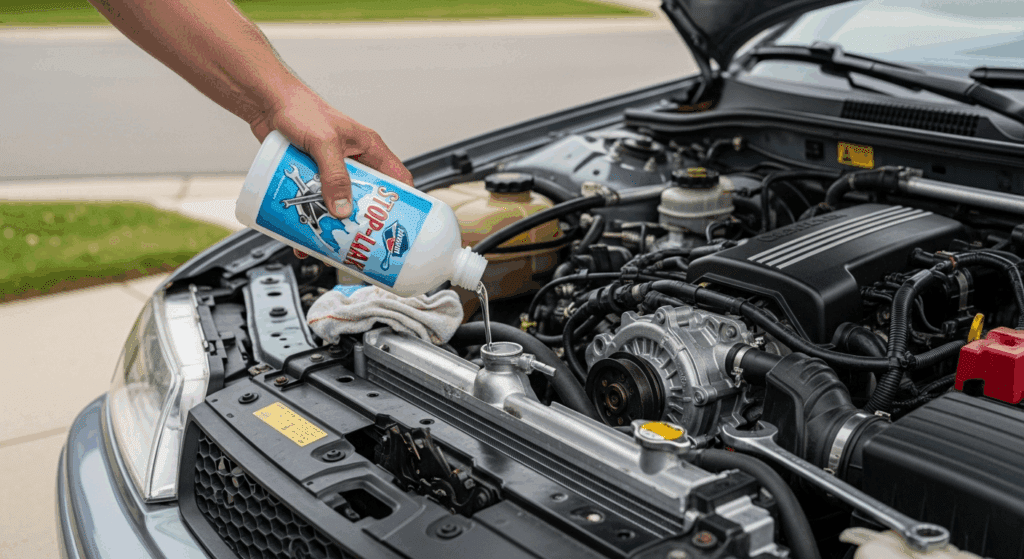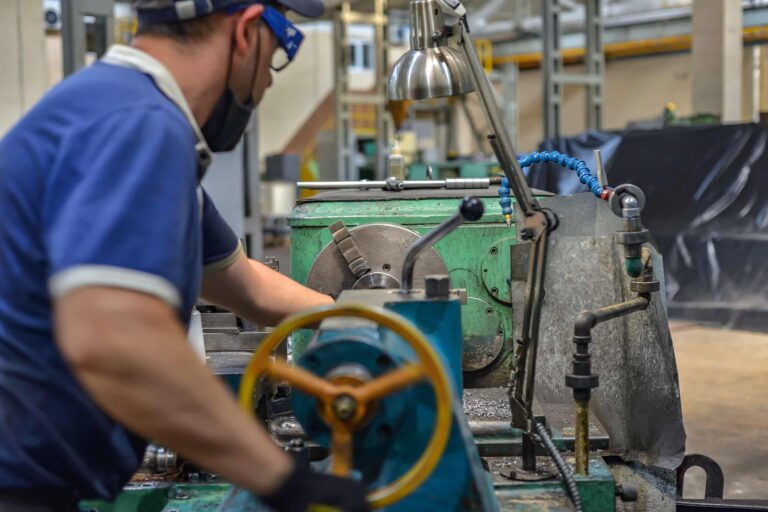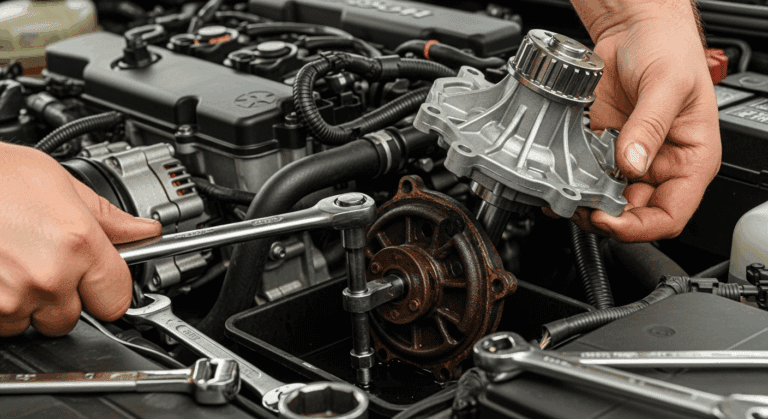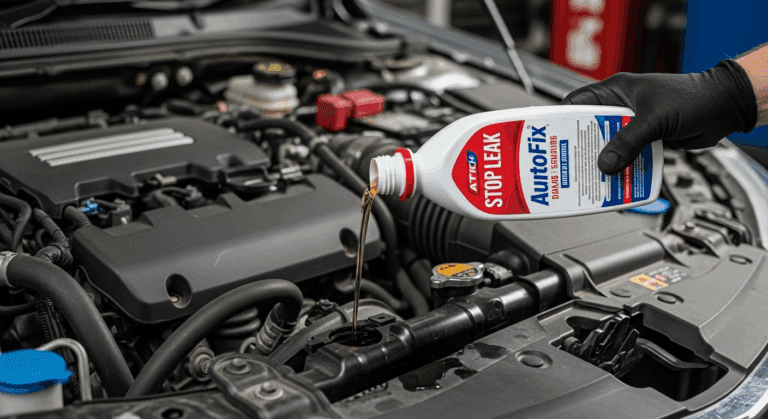A leaking water pump needs immediate attention to prevent engine damage, but you can buy yourself time with a temporary fix. These quick repairs can get you home safely or to a mechanic without causing catastrophic engine failure from overheating.
Your car’s water pump circulates coolant through the engine to prevent overheating. When it starts leaking, you’re on borrowed time before serious damage occurs.
The good news? Several temporary fixes can stop or slow the leak for days or even weeks, giving you time to arrange proper repairs.

Safety First: What You Need to Know
Never attempt any repair on a hot engine – wait at least 30 minutes after driving. Hot coolant can cause severe burns, and the cooling system is under pressure when warm.
Method 1: Commercial Stop-Leak Products
Stop-leak additives are your fastest temporary fix, working in about 15 minutes to seal small leaks. Pour the product directly into your radiator or coolant reservoir while the engine is cool.
Start the engine and let it run for 10-15 minutes. The product circulates through the system and hardens when it contacts air at the leak point.
This method works best for pinhole leaks and weep holes. It won’t fix major cracks or broken seals, but it can buy you several weeks of driving time.
Method 2: Epoxy or JB Weld Repair
For visible external leaks on the pump housing, epoxy provides a stronger temporary seal that can last months. Clean the leak area thoroughly with sandpaper and degreaser first.
Mix the two-part epoxy according to instructions. Apply it generously over the leak, extending at least an inch beyond the damaged area.
Let it cure for the full recommended time – usually 24 hours. This fix works especially well for cracks in the pump housing or mounting points.
Method 3: Temporary Gasket Maker
If the leak comes from the gasket area where the pump meets the engine, high-temperature RTV silicone can create a temporary seal. Remove as much of the old gasket as possible without fully removing the pump.
Apply a thick bead of RTV silicone along the seam. Use your finger to smooth it into any gaps or crevices.
Allow it to partially cure for about an hour before adding coolant. Wait 24 hours before driving for the best results.
How Long These Fixes Really Last
Stop-leak additives typically work for 2-4 weeks with normal driving. Heavy use or high temperatures break them down faster.
Epoxy patches can last 1-3 months if you avoid overheating the engine. Once temperatures spike above 250°F, most epoxies start to soften and fail.
RTV silicone fixes usually give you 1-2 weeks. Engine vibration and heat cycles eventually shake them loose.
When Temporary Fixes Won’t Work
Don’t even attempt a temporary fix if coolant is gushing out—you’re losing it faster than you can add it. Call a tow truck instead.
Skip the DIY approach if the pump shaft is wobbling or making loud grinding noises. The bearing is gone, and the pump could seize at any moment.
Forget temporary fixes if you see coolant mixed with oil (it looks like chocolate milk). You’ve got bigger problems than just the water pump.
FAQs
Can I drive with a leaking water pump?
You can drive short distances with a small leak if you monitor the temperature gauge closely and keep extra coolant handy. Stop immediately if the temperature rises above normal or you see steam.
Will stop-leak products damage my engine?
Quality stop-leak products are safe when used as directed for temporary repairs. Avoid using them repeatedly or in large quantities, as they can eventually clog small coolant passages.
How do I know if my water pump needs replacing?
Your pump needs replacement if it’s leaking from the shaft seal, making grinding noises, or if the pulley wobbles when you wiggle it. These indicate internal failure that can’t be temporarily fixed.
Can I use regular silicone instead of RTV?
No, regular silicone can’t withstand the high temperatures in your cooling system. Only use high-temperature RTV silicone rated for at least 500°F for automotive cooling system repairs.
How much coolant loss is normal?
Losing less than a cup of coolant between oil changes is normal. Anything more than that indicates a leak that needs attention, even if you can’t see where it’s coming from.
Can I mix different types of stop-leak products?
Never mix different stop-leak products as they can react chemically and create clogs. If one product doesn’t work, flush the system completely before trying another type.




